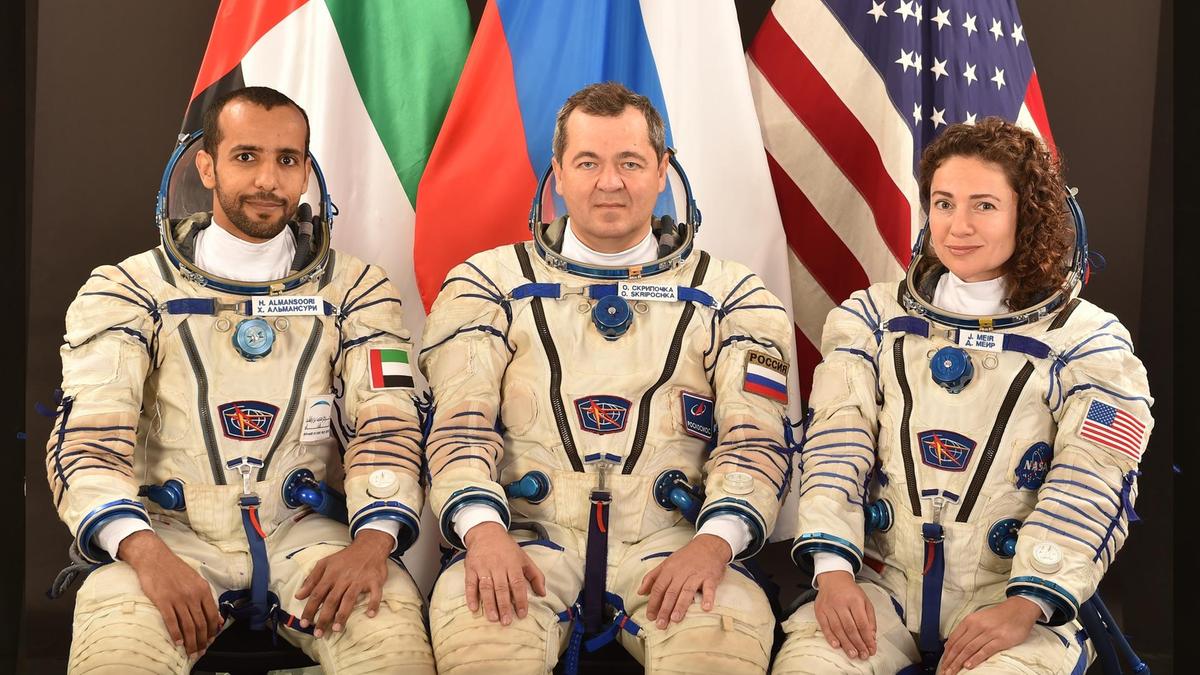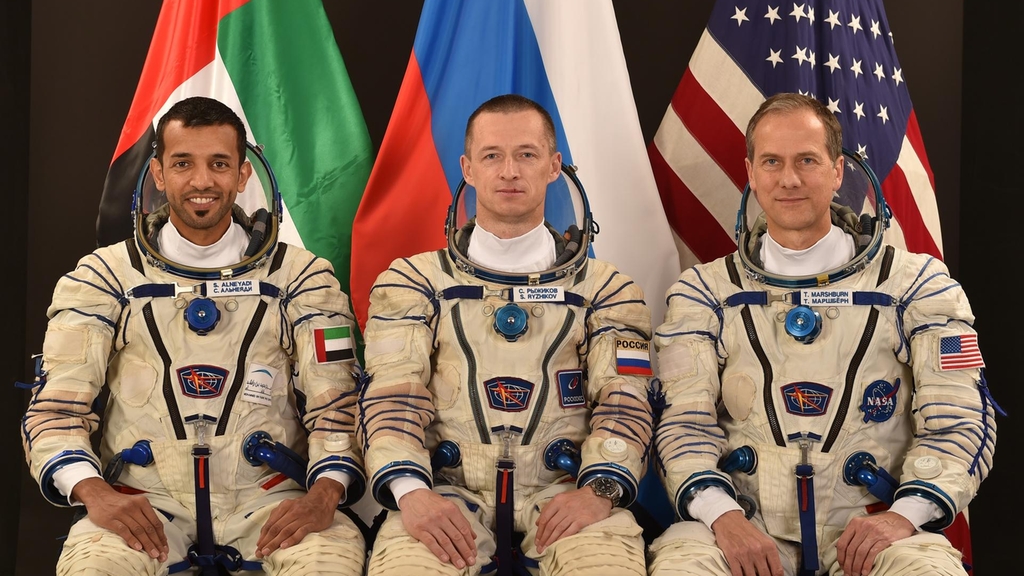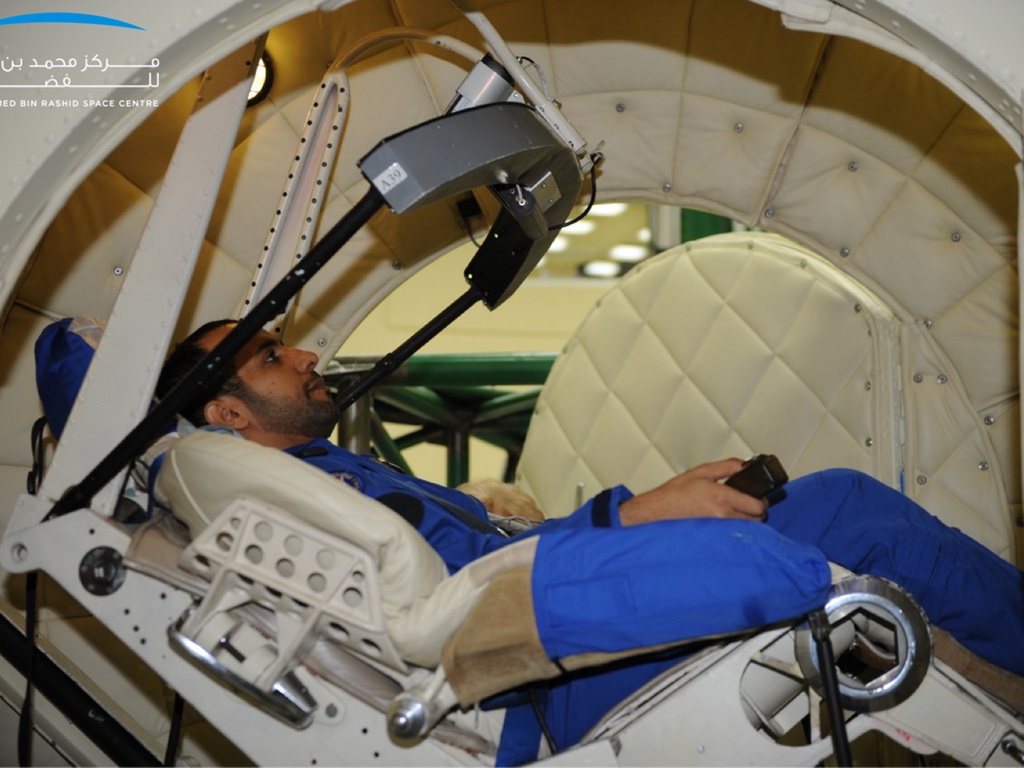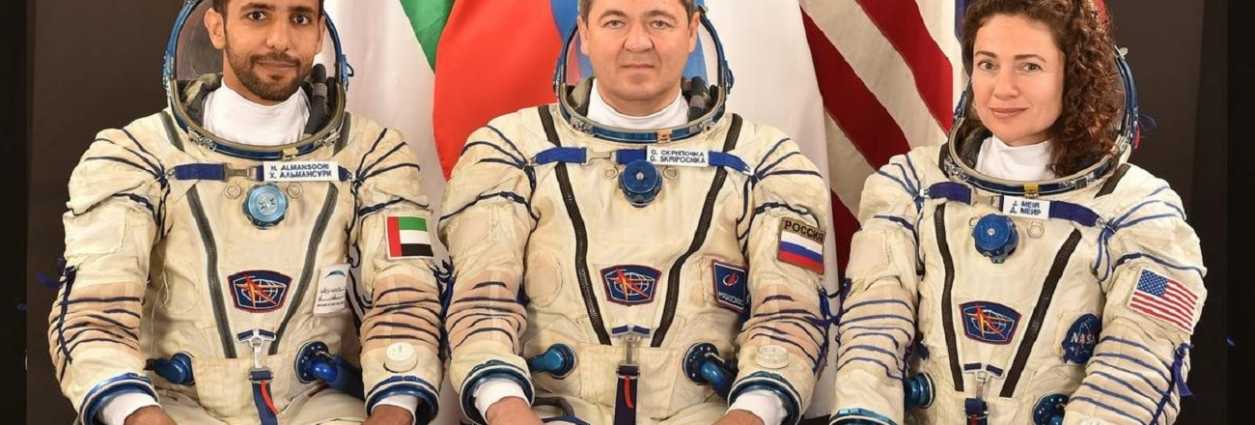Countdown begins: 100 days until first Emirati astronaut goes into space
By Aliheydar_Rzayev Tuesday, 25 June 2019 1:38 AM

It is approximately eight million seconds until the countdown to blast-off, or to put it another way, almost 100 days until the first Emirati astronaut goes into space.
For astronauts Hazza Al Mansouri and Sultan Al Neyadi, undergoing training at the Yuri Gagarin Cosmonaut Training Centre in Russia’s Star City, the coming days will fly by.
Preparations for the launch of Soyuz MS-15 on September 25 are now at an advanced stage.
Two weeks ago, fellow US astronaut Jessica Meir revealed the crew is now training together for the first time. She tweeted a photograph of her with Mr Al Mansouri, the UAE’s prime astronaut, and veteran mission commander, Russia’s Oleg Skripochka, in their spacesuits.
They sat in front of the Soyuz capsule that will take them to the International Space Station.
The training now includes riding the massive centrifuge that simulates the 3.5 gravitational force (g-force) of lift-off – equal to that of the fastest roller coasters – and the 4.5g-force on landing.
The astronauts will also learn how to survive in a water environment next month.
Ms Meir described another training exercise (that hopefully will never be needed): an emergency evacuation of the ISS. Those on board, including Mr Al Mansouri, will need to put on what the astronaut described as a “sweaty, fogging” oxygen mask while getting into their spacesuits.
This will be the next manned mission to the space station. An unmanned flight, the Soyuz MS-14, is due for launch in August and will test the abort system for the next generation of Russian space rockets.
For the September flight, the Russian space agency, Roscosmos, will use its workhorse Soyuz-FG launch vehicle, the world’s most reliable spacecraft.
In May, the upper sections of the shuttle, including the capsule, completed the first stage of the journey, although considerably slower than the orbital speed of 28,000kph.
Sections of the ship were transported 2,500 kilometres by rail from the Energia aerospace company in Moscow to the Baikanor Space Centre in Kazakhstan.
The spacecraft will be assembled on Baikanor’s historic Site One, also called Gagarin’s Start after the Russian astronaut Yuri Gagarin, who made the first manned space flight in history from the launch pad in June 1961.
It is believed the UAE mission may be the last to take off from the launch pad because it will be too costly to upgrade it for the next generation of Soyuz rockets, scheduled to come into service in early 2020.
“Youth in the UAE and the entire Arab region are looking forward to this historical event,” said Yousuf Al Shaibani, director general of the Mohammed bin Rashid Space Centre of the September launch. “We strive to see the UAE Astronaut Programme achieve its objective of preparing generations of Emiratis who will contribute to enhancing the country's position in space science and research to serve the ambitious aspirations aimed at building a national knowledge-based economy."
 Astronauts Mr Al Mansouri and Mr Al Neyadi's training has previously included a battery of medical tests and gaining at least a working knowledge of Russian. They also took part in a survival exercise, in which the crew must learn to fend for themselves in case the return goes off course and lands in the vast Russian wilderness.
Astronauts Mr Al Mansouri and Mr Al Neyadi's training has previously included a battery of medical tests and gaining at least a working knowledge of Russian. They also took part in a survival exercise, in which the crew must learn to fend for themselves in case the return goes off course and lands in the vast Russian wilderness.
"We are training for take-off, arriving at the ISS and returning from ISS and how to deal with emergencies,” Mr Al Mansouri said in a video message last month.
The Emirati pair are due to travel to the European Astronaut Centre in Cologne, Germany, and then to the Lyndon B Johnson Space Centre in Houston, Texas, for more training.
Mr Al Mansouri, along with the other two members of the prime crew, is now focusing on the flight into orbit and life on the space station.
His eight-day mission will be packed with tasks including giving a tour of the ISS in Arabic for viewers on Earth and carrying out 15 experiments from the Mohammed bin Rashid Space Centre’s Science in Space schools competition.
At the end of each day, Mr Al Mansouri will rest in a sleeping pack attached to the wall of a one-person crew cabin. He will have to master the complexities of using a “space toilet”, which involves leg restraints and a vacuum pump.
 According to the Russian news agency Sputnik, Al Mansouri will be provided with a menu of Emirati delicacies including the chicken stew salona, the rice dish madrouba, and balaleet, sweetened vermicelli served with an omelette, for breakfast.
According to the Russian news agency Sputnik, Al Mansouri will be provided with a menu of Emirati delicacies including the chicken stew salona, the rice dish madrouba, and balaleet, sweetened vermicelli served with an omelette, for breakfast.
The food will be processed in special pouches to be conducive to eating at zero gravity.
Mr Al Mansouri’s two fellow astronauts on MS-15 will remain on the ISS for longer, joining three other members of Mission 61 on the space station.
The Emirati will return home on October 3 in the capsule for Soyuz MS-12, which has been docked at the space station since March, and joined by the Russian astronaut Alexsey Ovchinin and Nasa’s Nick Hague.
A successful conclusion to the mission will not be the end of Emirati astronauts travelling into space. Back-up astronaut Mr Al Neyadi has already been promised a seat on a future mission, and the MBRSC is developing an astronaut corps for the UAE National Space Programme.
“We are proud of the level that the astronauts have reached due to their huge effort and the support provided to them. They gained a lot of experience through the intensive training that they underwent so far, which qualifies them to carry out the task perfectly,” said Salem Al Marri, Assistant Director General for Scientific and Technical Affairs.
“Nevertheless, there is additional training with our partners in Russia, Europe and US, to prepare them well before September 25.”
The National





























Add new comment